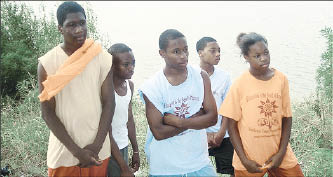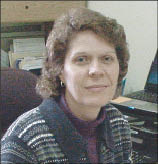 |
|
A racing team from the Sunflower County Freedom Project prepares for a 5K race. The teens are (left to right) Michael Burse, Dalvin Johnson, Frankie Brown, Reggie Higgins and Mykia Clayton. Photo: SCFP |
If you contribute to the After the Bell after-school program in Merrill, Wis., you get a special reward: your picture and a small write-up in the local newspaper.
That might be a bit square and impractical in a city, but it’s the kind of creative fundraising that’s necessary for programs in rural areas – which, given the national tendency to obsess over the ills that face urban youth, are often an afterthought. But more efforts are under way to explore and expand after-school access in less populated areas, including federal legislation to fund rural programs.
Rural after-school administrators are increasingly finding ways to overcome their litany of special hurdles, including shortages of qualified workers, transportation and infrastructure, and fewer local foundations and large corporations. Some even see advantages: Solid programs can more easily attract attention and, therefore, donors.
Because small rural initiatives can start and scale up quickly, early supporters can see their assistance put directly to use, said Greg McCoy, executive director of the Sunflower County Freedom Project in Mississippi.
“You don’t have to start big to make an impact,” said McCoy, whose civil rights-focused after-school program in the Mississippi Delta region helps prepare youth for college.” I think that rural communities are in a unique position – almost to the point where it’s an advantage – to attract funding,”
The Rural Dilemma
Rural after-school services have been getting more attention lately. Last year, the Afterschool Alliance released an issue brief, Afterschool Programs: Helping Kids Succeed in Rural Areas. Follow-up briefings on Capitol Hill were “standing room only,” said Jodi Grant, executive director of the alliance.
The issue brief summarizes the challenge:
• Twenty-one percent of the nation’s children attend public school in rural areas.
• Schools in rural areas have the lowest median per-student funding for after-school programs under the federal 21st Century Community Learning Centers (CLC) program, which is funded at nearly $1.1 billion for fiscal 2009.
• Rural America is home to 2.5 million children who live in “deep and persistent poverty”; 19 percent of children residing in rural areas live in poverty, compared with 15 percent of non-rural children.
• After-school programs can be rural youths’ only access to enrichment services like literacy, nutrition education, technology and college-prep training.
Those themes were advanced when The Finance Project, a nonprofit research organization that works on financing and sustainability strategies for initiatives that benefit youth and families, explored the topic in a January 2008 report and in a summer audio conference.
 |
|
Moellendorf: Funding after-school programs in rural areas “can be a real challenge.” |
“There are no YMCAs or Boys and Girls Clubs in our county, no youth centers,” Debbie Moellendorf, a 4-H Youth Development Agent at the University of Wisconsin, said during the audio conference. In Lincoln, a rural Wisconsin county of about 30,000 people, having an after-school program “can be a real challenge,” she said.
Here is how such programs are typically born: A call from the Merrill town librarian – whose library was flooded daily with middle schoolers who had nowhere to go after school – got Moellendorf thinking about the need for an after-school initiative. After surveying students and soliciting feedback from the library, school counselors and local law enforcement, Moellendorf and other community members launched After the Bell and now oversee the program from the steering committee. Now in its fifth year, the two-hour daily program, housed at the middle school, survives on a budget of $13,000, largely through monetary and in-kind donations from individuals, businesses and civic groups, Moellendorf said in an interview.
She said the CLC program excludes rural areas like hers that have a high need but that don’t meet the CLC criterion reserving grants for applicants that primarily serve youths who attend schools with a high concentration of poor students.
Federal and Local Dollars
Help might be on the way: Federal legislation introduced this fall would authorize the U.S. Department of Agriculture to offer flexible grants of $50,000 and up for rural after-school programs. The bill (S. 3545), co-sponsored by Sens. Blanche Lincoln (D-Ark.) and Susan Collins (R-Maine), would provide $50 million in the first year to improve, expand or establish after-school programs in rural areas, which Grant, of the Afterschool Alliance, said would help small programs build the kind of capacity that attracts other funders. The bill would provide funds for transportation, professional development, training, recruitment and retention of staff, technology and planning.
Moellendorf said the grants would “provide some stability” to After the Bell, particularly in down times like this, when “our donations … are behind from what they normally have been.”
The bill didn’t pass. Grant expects it to be reintroduced in the new Congress in January and is “optimistic” that incoming president Barack Obama will carry through on campaign commitments to double after-school funding.
Not all rural programs, however, want federal funds. At the Freedom Project in Mississippi, none of McCoy’s $126,000 annual budget is derived from federal grants. He said fixed costs are paid mainly by local residents, businesses and program alumni, with the programming budget picked up by local, state and national foundations. Funders include the W.K. Kellogg Foundation, Dollar General and the Walton Family Foundation. Program participants – 40 to 50 youths a year – pay $25 per month.
The Freedom Project serves youth mainly from Sunflower (population around 700) and Ruleville (population 3,200). More than 80 percent of the youth in the program are low-income, and a majority of them come from one-parent homes, according to McCoy and a program fact sheet. The program provides year-round academic enrichment, mentoring, educational travel, martial arts training, drama and media production, all with one full-time and three part-time staffers.
The funding strategy focuses on tapping local resources and broadening those connections statewide or nationally. McCoy calls the project’s approach the “personal hustle,” whereupon each staffer and board member tries to woo a network of supporters.
At After the Bell in Wisconsin, Moellendorf said the names and pictures of all donors who want the publicity are placed in the local Merrill Courier and Foto News, which helps to generate contributions from others. In-kind donations of nearly expired juices and snacks from the local grocery store go a long way as well. The key, she said, is that “it’s really a program that belongs to the community and [is] supported by the community.”































